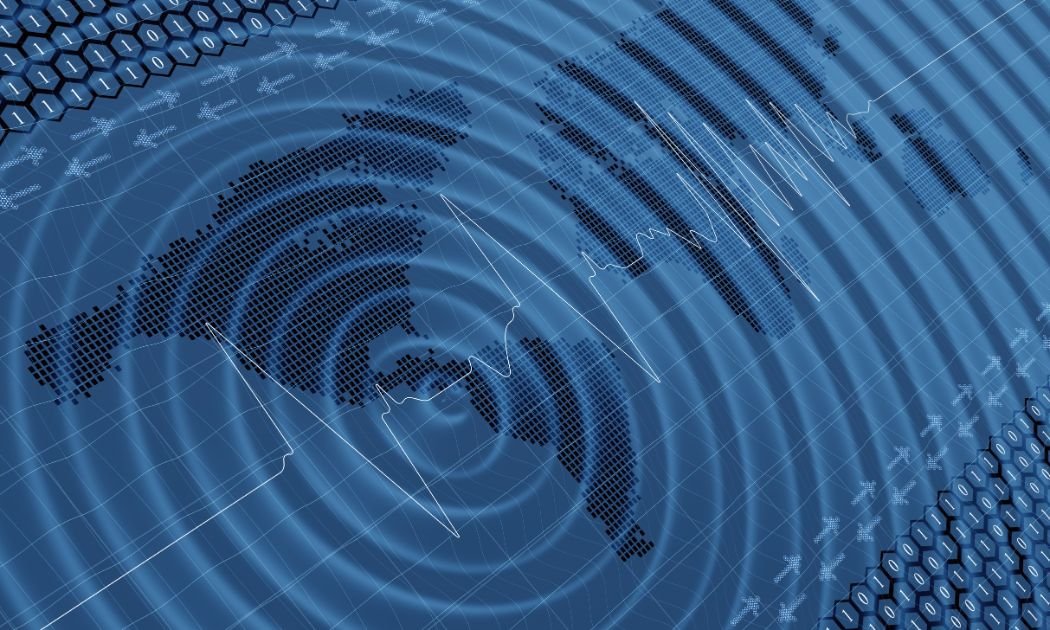Delhi Earthquake: Why a 4.2 Quake Felt Strong; What Comes Next?
The Quake Occurred at a Shallow Depth of 10 KM
February 17, 2025A magnitude 4.2 earthquake struck the Haryana-Delhi-Uttar Pradesh region early on Feb. 17, at 5.36 am, sending tremors across the National Capital Region. Occurring at a shallow depth of 10 km, the earthquake felt stronger than expected and led to concerns about the possibility of aftershocks, and whether it could be a precursor to a larger event.
The earthquake’s epicenter was at 28.643°N and 77.107°E, according to the U.S. Geological Survey.
One of the primary reasons for the earthquake feeling stronger was its shallow depth. Shallow earthquakes, occurring closer to the Earth’s surface, tend to produce more intense ground shaking compared to deeper ones of the same magnitude.
Further, Delhi’s dense urban environment played a role in amplifying the tremors. High-rise buildings, flyovers and bridges are particularly susceptible to seismic waves, making shaking more noticeable, especially for those on upper floors.
The geological conditions of the region also contributed to the intensity of the tremors. Large parts of Delhi rest on soft alluvial soil, which is known to amplify seismic waves, making even moderate quakes feel stronger. Areas with weaker soil structures, such as parts of East Delhi and Noida, are particularly vulnerable to this effect.
Regarding aftershocks, they are not guaranteed but remain a possibility.
Aftershocks occur when the Earth’s crust adjusts to the stress changes caused by the initial rupture, and their likelihood depends on various factors. Given that this earthquake was shallow, there is a chance of minor aftershocks in the coming hours or days.
Seismic history shows that while Delhi has experienced occasional moderate earthquakes, aftershock sequences in the region have been rare. However, if the earthquake occurred on an active fault accumulating stress, further tremors could follow. So far, no significant aftershocks have been reported.
Some might wonder whether this earthquake could be a foreshock, which is a smaller tremor that precedes a larger seismic event in the same region.
Determining if an earthquake is a foreshock can only be done in hindsight, but certain indicators can offer clues. If more earthquakes of similar or greater magnitude occur in the next days or weeks, it would suggest that this was a foreshock to a larger event.
The region sits on several active faults, including the Delhi-Hardwar Ridge and the Mahendragarh-Dehradun Fault, which have the potential to generate stronger earthquakes.
While major earthquakes in Delhi are historically rare, stress accumulation in the broader tectonic setting of the India-Eurasia plate collision continues. The northward movement of the Indian plate at a rate of 40–50 mm per year generates significant seismic activity, particularly in the Himalayas. Though most of this stress is released in large Himalayan earthquakes, some energy transfer affects the surrounding regions, including Delhi.
Delhi lies in Seismic Zone IV, meaning it is considered high-risk for earthquakes. While most tremors in the region have been moderate, the presence of active faults and the potential for stress accumulation mean that a larger earthquake cannot be ruled out.
The strong shaking from this event should serve as a reminder of the city’s seismic vulnerability, especially given its dense population, aging infrastructure and soft soil conditions. Authorities should use this event to reassess structural safety and improve earthquake preparedness, particularly in high-rise buildings, schools, hospitals and bridges.
Residents should remain aware but not alarmed, as earthquakes of this magnitude typically do not cause major damage. However, preparedness remains essential.

